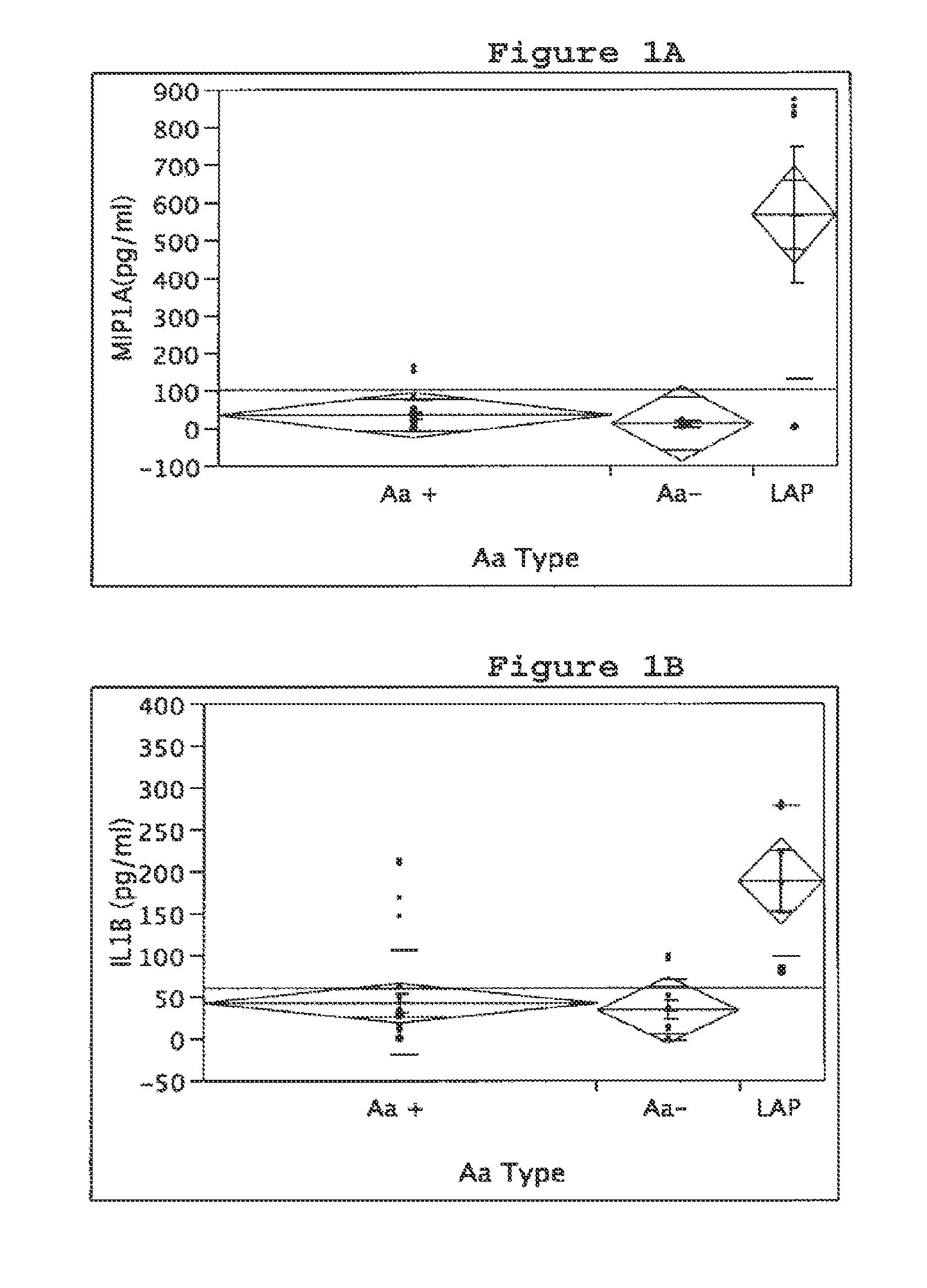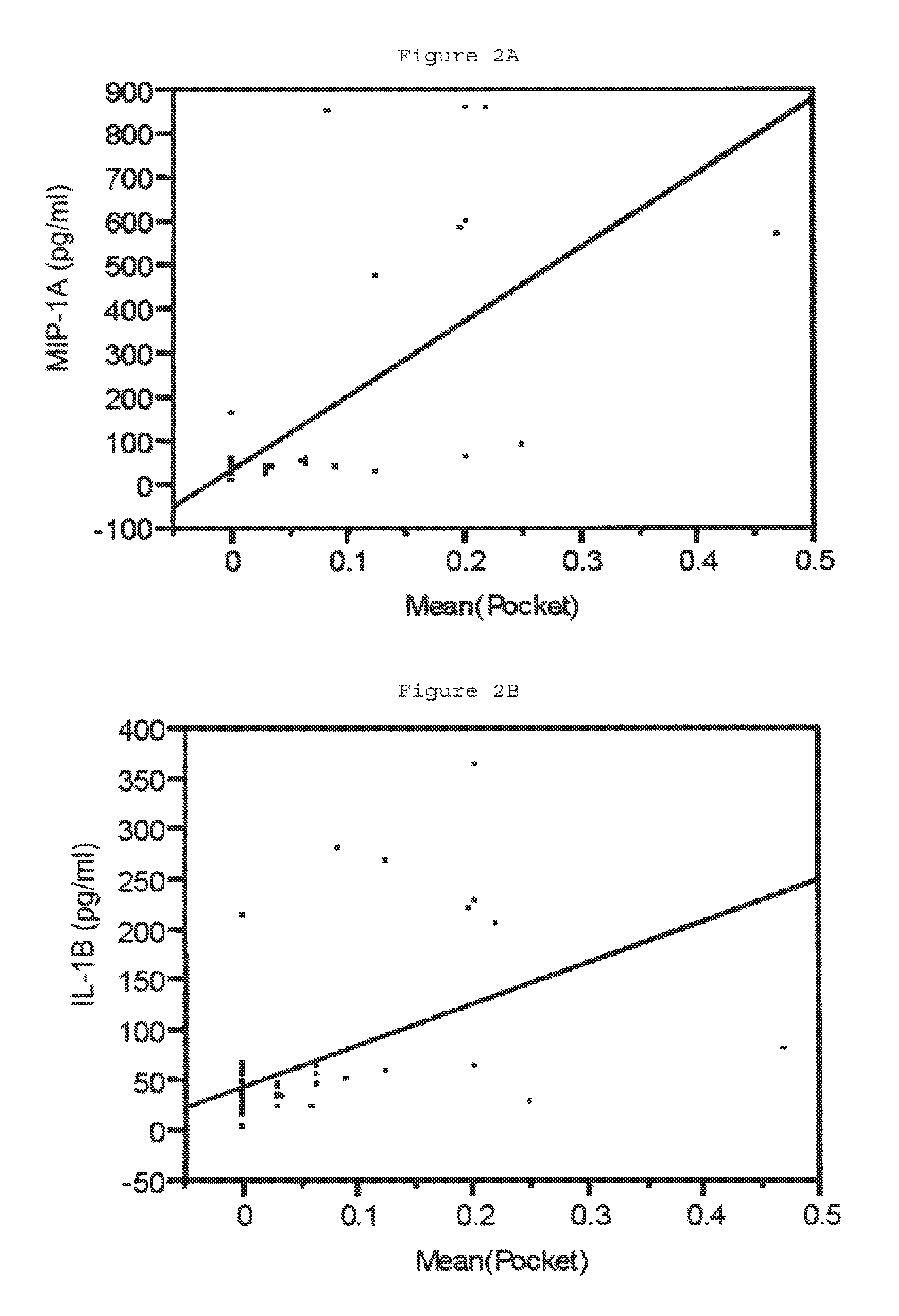Method for detection of active periodontal disease at the local tooth site
a local tooth site and active periodontal disease technology, applied in the field of detection and diagnosis of periodontal disease, can solve the problems of tooth loss, increased risk of systemic complications including heart disease, and the most prevalent and costly of dental infections
- Summary
- Abstract
- Description
- Claims
- Application Information
AI Technical Summary
Benefits of technology
Problems solved by technology
Method used
Image
Examples
example 1
[0036]This study details the survey of cytokines / chemokines obtained from saliva of at risk subjects who were enrolled in a longitudinal cohort study of a specialized form of periodontal disease that occurs in adolescents, localized aggressive periodontitis (LAP).
[0037]The study involves the association of Aggregatibacter actinomycetemcomitans (Aa) with the initiation of LAP. This disease has afforded us the opportunity to study bone loss because, 1) the disease occurs in juveniles (this is a rare event and thus makes the disease easier to identify when it happens because it is so rare in children), 2) the disease is localized to first molars and therefore we can focus on first molars (there are four; as opposed to the 28 other teeth which we would have to follow if we studied adults), 3) it is rapidly progressive (and occurs in one to three years as opposed to disease in adults which has no well defined time limit) and 4) is associated with a particular microbe (Aa; as opposed to a...
example 2
[0073]Following a similar testing procedure as set out in Example 1, tests were run on 16 LAP patients before bone loss was detected, 20 LAP patients after bone loss was detected, 82 healthy patients, and 36 patients with potential disease. Each of these patients had assays run to determine the level of the most likely cytokines present in salivary samples. 40 different cytokines were tested, with MIP-1α, MIP-1β, IL-12 (p40) and IL-1β showing the best results for distinguishing those individuals that would develop bone loss 6-9 months prior to x-ray evidence. As shown in Table 4, there is about a 40 fold elevation in MIP-1α at 6-9 months prior to bone loss, which supports the findings of Example 1. Once again, IL-1β was also one of the cytokines that was elevated, but it was elevated in health, potential disease and after bone loss. According, MIP-1α is preferable as the biomarker for future bone loss due to periodontal disease.
[0074]
PUM
| Property | Measurement | Unit |
|---|---|---|
| forces | aaaaa | aaaaa |
| adsorption | aaaaa | aaaaa |
| mean pocket depths | aaaaa | aaaaa |
Abstract
Description
Claims
Application Information
 Login to View More
Login to View More - R&D
- Intellectual Property
- Life Sciences
- Materials
- Tech Scout
- Unparalleled Data Quality
- Higher Quality Content
- 60% Fewer Hallucinations
Browse by: Latest US Patents, China's latest patents, Technical Efficacy Thesaurus, Application Domain, Technology Topic, Popular Technical Reports.
© 2025 PatSnap. All rights reserved.Legal|Privacy policy|Modern Slavery Act Transparency Statement|Sitemap|About US| Contact US: help@patsnap.com


